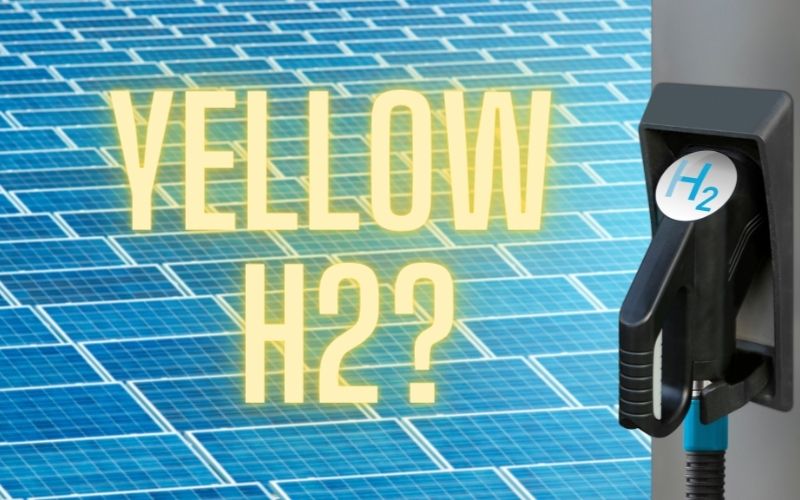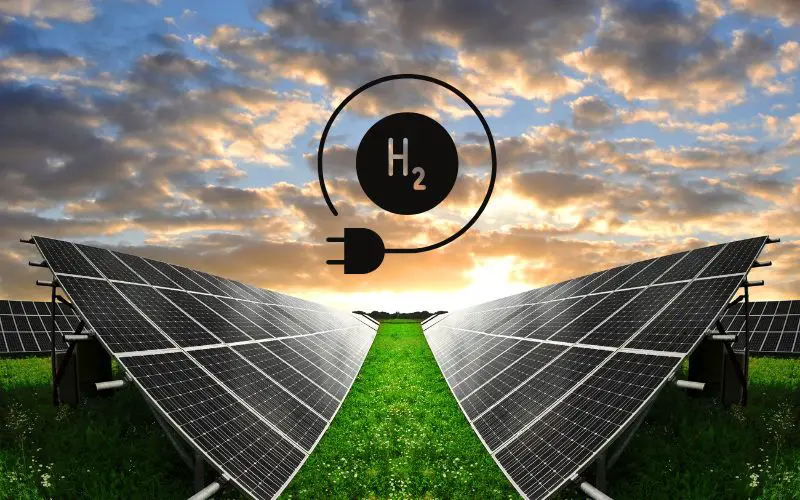
Exploring the Wonders of Yellow Hydrogen
August 6, 2022As H2 gains focus worldwide as countries aim to decarbonize, different forms are standing out.
Yellow hydrogen is somewhat of a new designation among different forms of H2, even though the method it uses to produce the clean fuel isn’t anything new.
This form of H2 has previously been lumped into the renewable green designation.
Yellow hydrogen is essentially a form of green hydrogen. Green refers to the types of production that are powered by renewable energy in order to avoid greenhouse gas emissions. Renewable forms of energy include wind and solar, for instance. It is from precisely that breakdown that this newer designation has sprung.
As the name suggests, it is a type of H2 that is made through electrolysis that is powered by solar energy. While it remains a form of green, since it is powered by renewable energy, it is a more specific designation to clarify precisely what form of renewable electricity is used to power the process.
Click to learn more about many of the other different hydrogen colors and what their production means to their carbon emissions.

Yellow hydrogen is increasing in popularity as countries seek H2 with zero carbon emissions.
Renewable produced H2 isn’t the only form of the fuel that doesn’t produce greenhouse gas emissions. Red hydrogen, for instance, is made using nuclear power. That said, even though the production process doesn’t result in carbon emissions, it does still create nuclear waste, which isn’t always considered ideal.
Yellow hydrogen uses solar panels to collect energy from the sun and convert it into electricity. That electricity is then used to power the electrolyzers that split water molecules into hydrogen and oxygen. The renewable power allows this process to occur without greenhouse gas emissions.
The resulting H2 is also used without producing greenhouse gas emissions, meaning that it is often viewed as one of the cleanest alternatives to using fossil fuels.
Among the primary challenges associated with yellow hydrogen include the cost of production when compared to the cost of the fossil fuel it would replace, as well as determining what to do with solar panels when they reach the end of their lifecycles. This involves determining how long does a solar panel last and how to recycle them when the time comes, so they don’t end up another problem for landfills.
Yellow Hydrogen FAQ’s…
What is yellow hydrogen and how is it different from grey or blue hydrogen?
Yellow hydrogen is a form of renewable energy that is produced by extracting hydrogen gas from water through a process called electrolysis. It is referred to as “yellow” because it is generated using solar power, making it a completely carbon-free source of energy. In contrast, grey hydrogen is produced from natural gas, which emits high levels of carbon dioxide during its extraction and processing. Blue hydrogen, on the other hand, is also made from natural gas but uses carbon capture technology to minimize its carbon footprint.
How can yellow hydrogen be used as a source of energy?
Yellow hydrogen can be used in a variety of ways, including as a fuel for cars, buses, and other forms of transportation, as well as for heating homes and powering industries. It can also be used to generate electricity through fuel cells, which convert hydrogen into electrical energy.
What are the benefits of yellow hydrogen over traditional forms of energy?
Yellow hydrogen has several advantages over traditional forms of energy, such as coal or natural gas. Firstly, it is completely renewable and does not produce any harmful emissions, making it much cleaner for the environment. Secondly, it can be produced locally using solar power, which reduces dependence on foreign oil and gas. Finally, it is highly versatile and can be used in a wide range of applications, from transportation to industry.
Firstly, it is completely renewable and does not produce any harmful emissions, making it much cleaner for the environment. Secondly, it can be produced locally using solar power, which reduces dependence on foreign oil and gas. Finally, it is highly versatile and can be used in a wide range of applications, from transportation to industry.
Is yellow hydrogen cost-effective compared to other forms of energy?
While the initial investment in producing yellow hydrogen can be relatively high, its long-term cost-effectiveness is improving as solar power becomes more affordable. Additionally, as more industries and governments prioritize reducing their carbon footprint, the demand for clean energy sources like yellow hydrogen is likely to increase.
What is the future of yellow hydrogen and its role in the transition to a carbon-free economy?
Yellow hydrogen is poised to play a critical role in the transition to a carbon-free economy, as it offers a sustainable and versatile alternative to traditional fossil fuels. Many countries and companies around the world are already investing heavily in the development and deployment of hydrogen technology, and experts predict that this trend will continue to grow in the coming years. As the world becomes more aware of the urgent need to reduce carbon emissions, yellow hydrogen is likely to become an increasingly important source of renewable energy.
The Take Away…
As countries worldwide aim to decarbonize and reduce their greenhouse gas emissions, hydrogen has emerged as a promising alternative to fossil fuels. Among the different forms of hydrogen, yellow hydrogen stands out for its use of solar energy to power the electrolysis process that creates the clean fuel. While it remains a form of green hydrogen, yellow hydrogen is a more specific designation to clarify precisely what form of renewable electricity is used to power the process. Yellow hydrogen is increasing in popularity as countries seek H2 with zero carbon emissions. However, primary challenges associated with this renewable form of energy include the cost of production when compared to fossil fuel and determining how to recycle solar panels when they reach the end of their lifecycles. Despite these challenges, yellow hydrogen is seen as one of the cleanest alternatives to using fossil fuels and offers hope for a sustainable future.




 With over 15 years of reporting hydrogen news, we are your premier source for the latest updates and insights in hydrogen and renewable energy.
With over 15 years of reporting hydrogen news, we are your premier source for the latest updates and insights in hydrogen and renewable energy.
Just a thought but where does hydrogen ripped from plastic with a catalyst and microwaves fall within the colour scheme of things